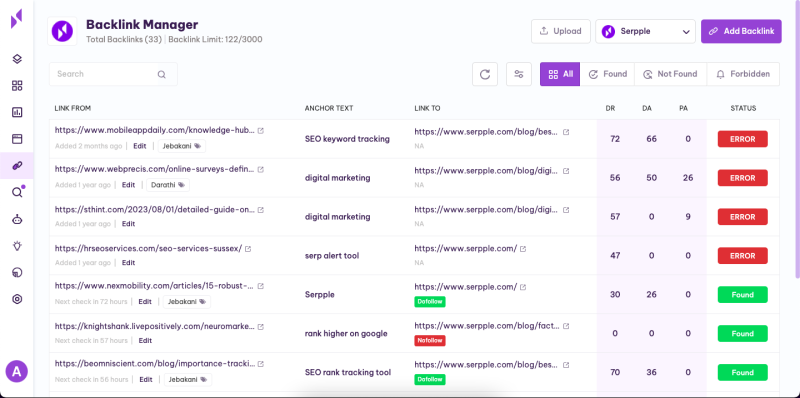Link building is a grind. You spend hours finding prospects, reaching out, waiting for responses, dealing with ghosting, and negotiating terms—whether it’s a paid placement or a link exchange. And after all that effort? There’s still a chance you’ll lose those hard-earned backlinks.
Worse, you might not even realize they’re gone. Manually checking every link daily is a massive time drain. That time you could be using to build more links instead.
Then, one day, you finally check and boom—your paid links or exchange partners have quietly removed your link. The longer it’s been, the harder it is to reclaim.
That’s why in this blog, we’re diving into how you can track lost backlinks and win them back to keep your sanity and website authority intact.
Let’s get into it.
Step 1: Add Your Backlinks to Serpple Backlink Management
Before you can track lost backlinks, you need a system to monitor them. That’s where the Serpple Backlink Monitoring Tool comes in. This tool lets you add your secured backlinks and automatically tracks their status—whether they’re live, removed, or have some error.
Plus, if you have potential backlinks in progress, you can add them too. Once they go live, Serpple will detect them, saving you the hassle of constant manual checks.
Here is how you can do this:
Upload Your Backlink Sheet to Serpple
Chances are, you already have a spreadsheet where you track your backlinks. Instead of manually entering each one, just format your sheet properly and upload it in a few simple steps:
1. Prepare Your Backlink Sheet
Organize your list with essential details: URL, anchor text, target page, and status.
Save the file as an Excel CSV for easy import.
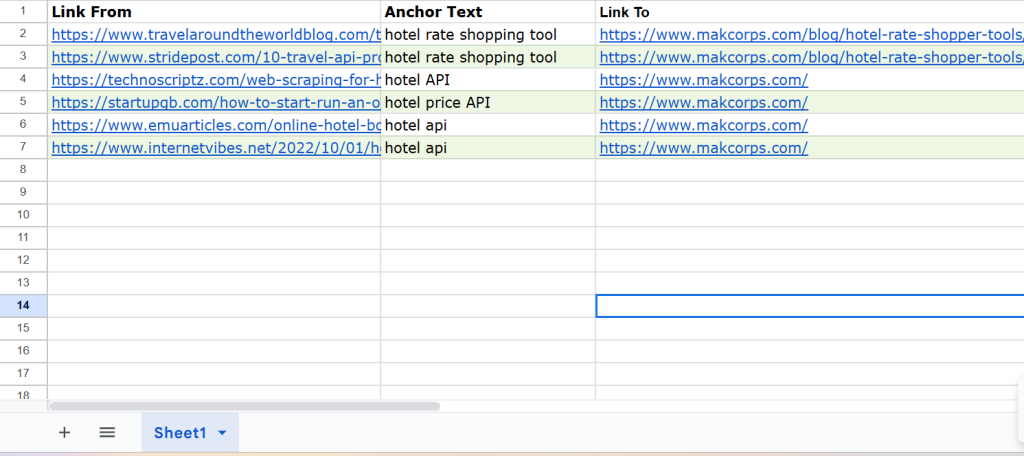
2. Upload to Serpple
Open Serpple Backlink Management and select your website domain.
If it’s not added yet, enter your domain and select it.
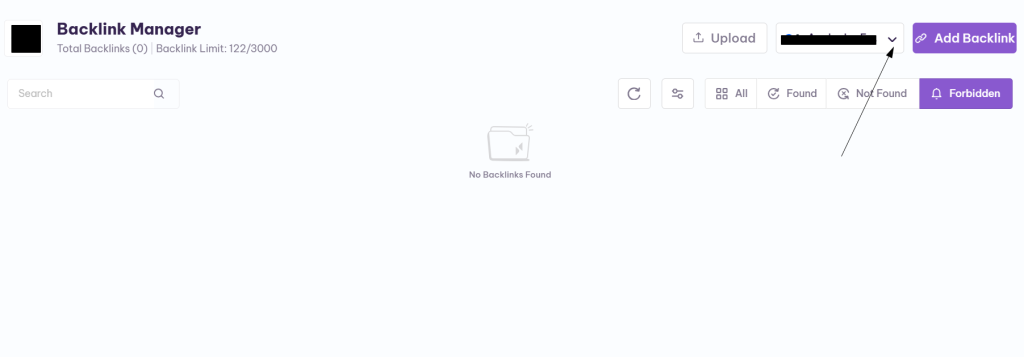
Upload the CSV file.

Map the fields (link to, anchor text, and target URL) and click on next.
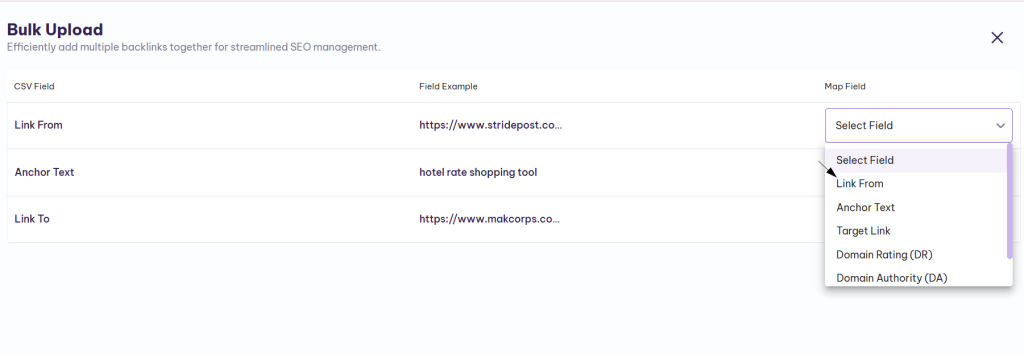
3. Track Your Backlinks
Once uploaded, Serpple’s Backlink Manager dashboard will display all your links.
Give it a moment, and you’ll see which links are:
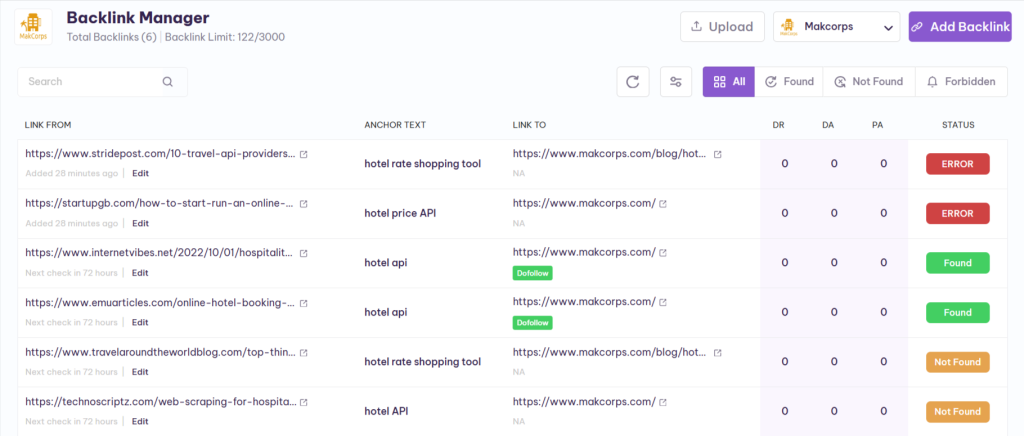
Found – Still active.
Not Found– No longer pointing to your site.
Error– Restricted or broken (404 errors).
You can also use the filter option to easily sort links by status so you don’t have to dig through them manually

Want to stay even more organized? Add tags to your Google Sheet to categorize links based on campaigns, partnerships, or acquisition methods. And, you can filter the links by selecting the tags from the dashboard.

With this setup, tracking backlinks daily becomes effortless, no heavy lifting required.
Adding Backlinks Manually
If you prefer to add backlinks one by one as you secure them, Serpple Backlink Monitoring Tool makes it simple.
Go to the Dashboard
Click on “Add Backlink”
Enter the required details:
- Backlink URL – The page where your link is placed.
- Anchor Text – The clickable text used for the link.
- Target URL – The page on your site the backlink points to.
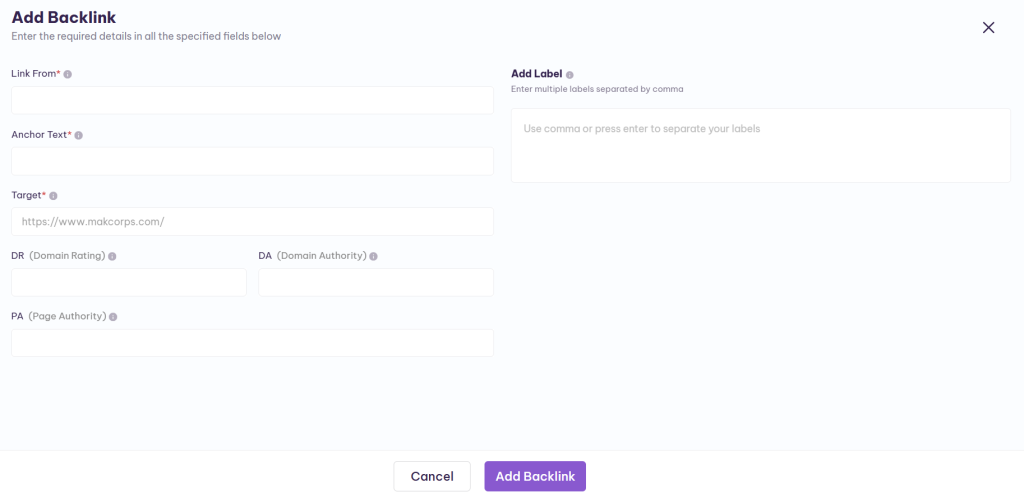
Click Save, and the tool will start tracking the status of your backlink.
This is a great option if you’re securing backlinks on an ongoing basis and want real-time tracking without waiting to upload a full sheet.
Step 2: Use Filters to Find Lost Backlinks
When it’s time to check for lost backlinks, this tool makes it easy with filters. Instead of manually going through every link, just do this:
Go to the Dashboard
Apply the Filter
Select “Not Found” to see backlinks that have been removed.

Select “Forbidden” to find links that are restricted or returning errors (like 404s).

This saves you time and lets you quickly spot missing backlinks so you can take action. Once you have the list, you’re ready for the next step.
Step 3: Reach out to Reclaim Your Backlinks
When securing backlinks, always keep a record of who you got them from—especially for paid placements or link exchanges. This will save you time when you need to follow up.
Here’s how to reconnect and reclaim lost links:
1. Find the Right Contact
If you maintain a sheet with contact details of each collaboration check that.
If it’s recent, you’ll likely remember. If not, dig through your past conversations on Linkedin, Slack or Gmail.
2. Locate Their Email
If you don’t have direct contact info, use an email finder tool to search for team members in SEO or content at that company.
Look up emails by domain URL to find the right person.
3. Send a Polite Follow-Up
Remind them about your previous collaboration. And, ask if there’s an issue and if they can restore the link.
A quick, friendly message can often get your backlink reinstated without much hassle.
Here is email follow-up you can use:
Hey [Name],
Hope you’re doing well!
I just noticed that the link we arranged for [Your Website] on [Their Website/Page] is no longer live. Since this was a paid placement, I wanted to check in—was this a mistake or site update?
Would appreciate it if you could restore it. Let me know if you need any details from my end.
Thanks!
[Your Name]
Step 4: Organizing Reclaimed Backlinks for Easy Tracking
Once your backlinks are live again, you’ll find them under the “Found” filter in your dashboard. To keep things organized, tag them as “Reclaim” so you can easily track all recovered links in one place.
Since placements might change when a link is reinstated, make sure to update the details in the tool. Just add the “Reclaim” tag to the new entry, and you’re all set!
Wrapping Up:
Losing backlinks hurts your SEO, but with Serpple Backlink Monitoring Tool, you can track, filter, and reclaim them effortlessly.
Start monitoring your lost links today—and while you’re at it, keep an eye on your rankings with Serpple’s rank tracking tool too!
Published by
Adam White
Adam White is a 20+ year SEO professional who has optimized over 400 websites, built and sold over 20 internet and SaaS businesses all with SEO as the main traffic source. Follow him on Twitter/X
All stories by Adam White
